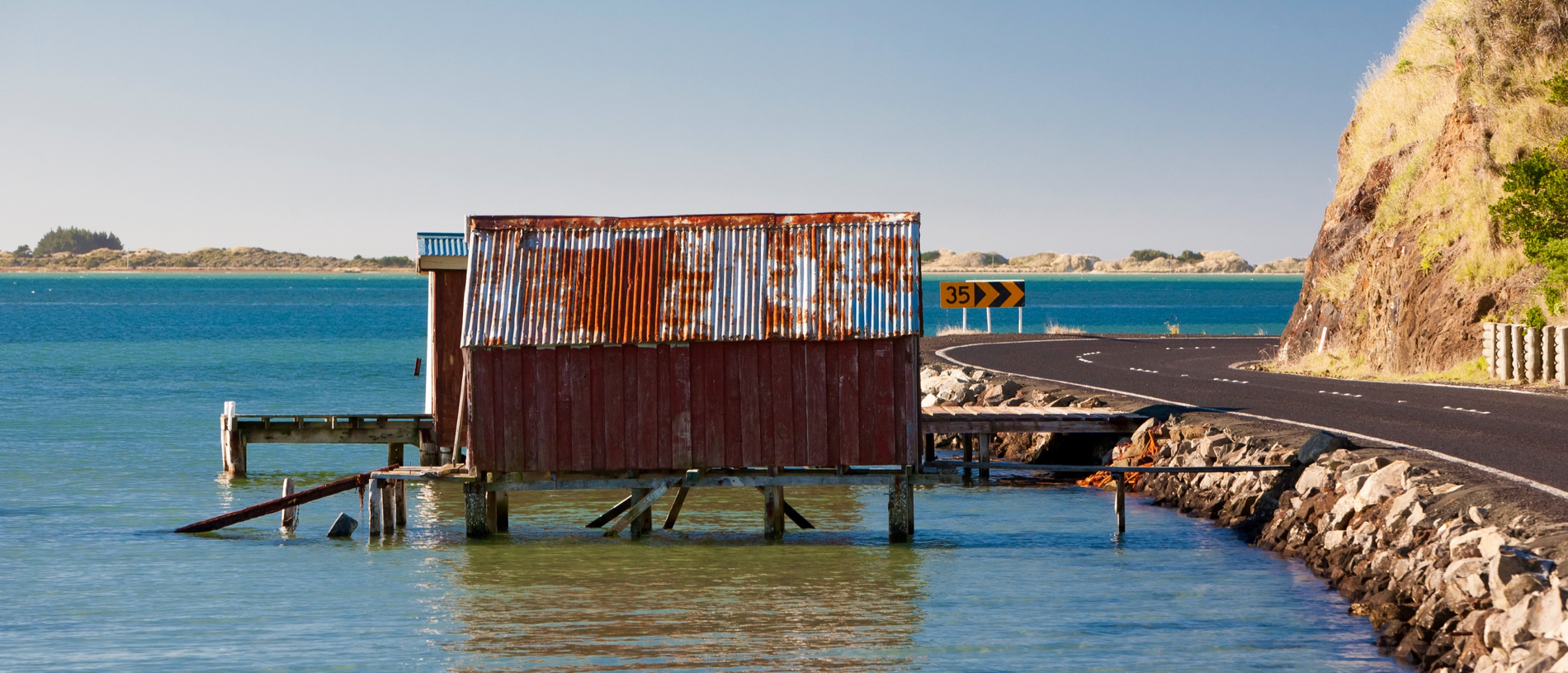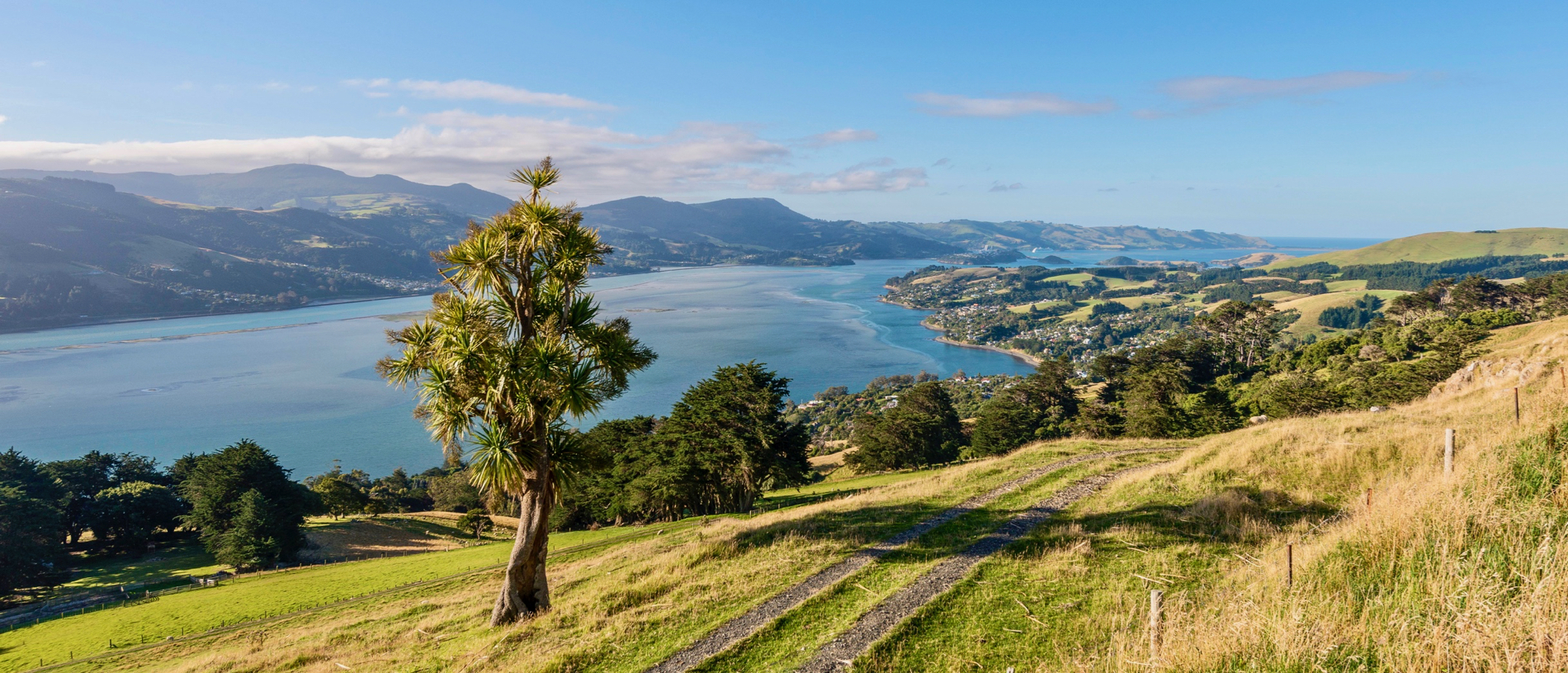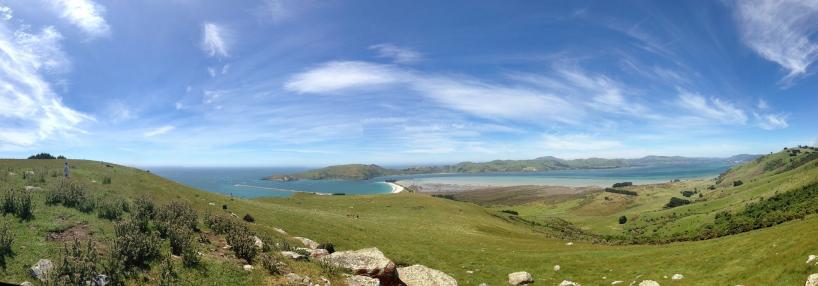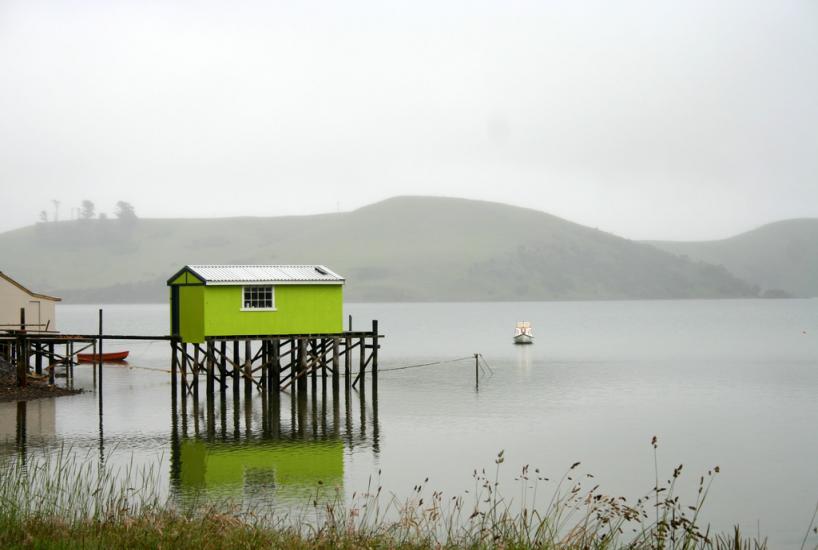
Loved by the locals: Otago Peninsula
Do what the locals do on the Otago Peninsula.

A peninsula provokes a certain state of mind, one of exposure to the elements and close proximity to nature. And as far as peninsulas go, there are few more striking than the superlative Otago Peninsula.
Just a half-hour drive from Dunedin you find yourself in a place seemingly transported from some semi-mythical homeland – at first glance the stone walls and green fields could be England’s Yorkshire or The Wolds – but there is a raw wildness here that perhaps has not sustained so robustly in the northern hemisphere.
The peninsula attracts life. There are beaches here that churn with surf blown up from the Southern Ocean, across which rare penguins and sea lions wander in from the sea. There are albatrosses that sweep the wind and precipitous cliffs that plunge into the furious tide.
The Peninsula is the ruins of a gutted volcano, an eroded pudding of lava that cradles in its arms the most glorious city harbour on the face of the earth, the Otago Harbour. Drive to the top of Highcliff Road on a clear winters’ morning as the fog dissipates below and defy that statement if you can – Sydney can’t hold a match to this lovely piece of water on a good day.
Of course, not all days are clear and blue here. The peninsula catches every bit of weather headed north and storms constantly race in from the south, ripping their guts out on the jagged basalt and dumping rain on Dunedin and the harbour.
But this unpredictable wildness only adds to the richness. There are spots where you feel you might be on some sub-Antarctic Island, with black-backed gulls nesting in the crevices of the cliffs and the sea churning up the kelp far below.
Local Māori chose this peninsula as their base and the rich resources of the harbour and the hinterland fed generations of their children. Europeans were drawn to the huge numbers of whales that once bred at the harbour mouth – but the Weller Brothers’ station at Ōtakau, one of New Zealand’s biggest, was short lived. The whales vanished and with it, the hunters. There is no trace of the whaling station now, save for the bloodlines of the people who still make the outermost villages of the peninsula their home.
Today you might be lucky enough to see one of the rare Southern Right whales the whale men used to hunt, now slowly returning to the harbour, perhaps from the rolling decks of the tour ship Monarch, which is the best way to see the wildlife here.
Much of the peninsula is still farmed, as it has been for more than a century and a half. The lovely dry-stone walls that divide the land are monuments to that long agricultural history, but this is no rural idyll – the farms on the eastern side are remote and wind-lashed. Even on one of the frequent sparkling blue days here, the macrocarpa trees that lean so low they almost touch the ground speak of the truly wild nature of this landscape.
On land, the peninsula is best accessed by car. Taiaroa Head, with its cheerful lighthouse, historic gun emplacement, flocks of seabirds and Northern Royal albatross breeding ground – the only mainland albatross colony in the world – is the Peninsula’s centrepiece, but also its most touristy spot.
From the sleepy village of Portobello, cross over to the wild side, where Papanui and Harwood Inlets indent the hills. Follow a gravel road to see where it leads, stop and watch the tide fill the land and don’t forget a pair of binoculars to pick out the numerous wading birds that forage in the mudflats.
Highcliff Road traces the ridgeline of the peninsula and offers stunning outlooks across the harbour and Pacific Ocean. From here you can access walking tracks that weave through farmland before dropping through sand dunes to lonely beaches where sea lions and fur seals can be found sunbathing.

Head out to one of the remote beaches at the end of the Peninsula – the further you have to walk the better – the more chance you’ll be alone with the sea lions and the wind-chased sand. Walk out to the Lovers’ Leap lookout and feel the elements in your face. Wilderness is what you came here for; that you can find it so close to the city of Dunedin is the real marvel of this place.
Following the windy roads back to the city provides the opportunity to explore the little harbourside villages, each with their own little, hidden treasures. The peninsula is a refuge for many artists and their work can be found on display in both Portobello and Macandrew Bay.

Explore the little harbourside villages, each with their own little, hidden treasures. © Felipe Skroski Creative Commons
Enjoying coffee or lunch in one of these peaceful spots, watching the harbour waves lapping at pilings of brightly painted boat houses, offers a striking contrast from the remote grandeur of the peninsula’s eastern side.
Maybe it’s all those old stone walls or the ghosts of those who have made this place their home, but there’s a different feel out here from the rest of the South Island. So take your time... Enjoy the changing light and weather, the deep resonance of time and history and some of the most spectacular wildlife the New Zealand coast can offer.
The Otago Peninsula state of mind is sure to stay with you forever.